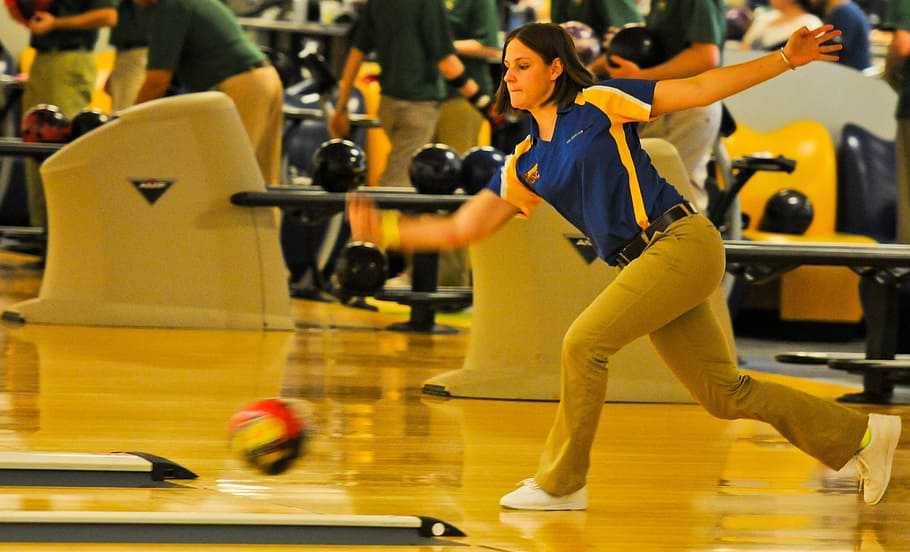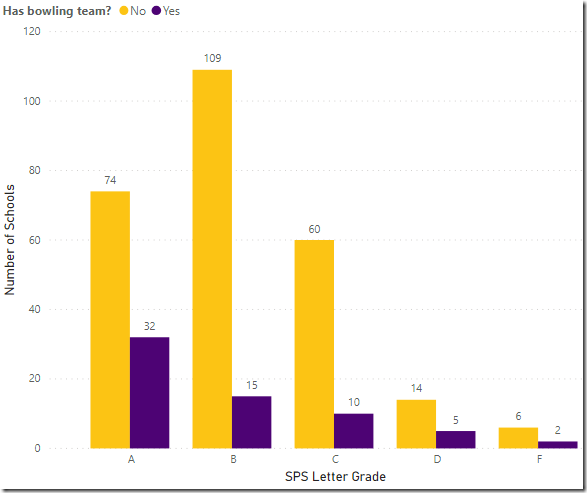Does your high school have a bowling team?

The most frustrating thing I see every year through my involvement in youth and high school coaching is that there are a lot of good youth bowlers who do not have access to bowling at their high schools. At one of the local venues in town there is an ad recommending to “Join Your High School Bowling Team” … The problem is, some youth bowlers can’t. I aim to provide some evidence as to why your school should provide this opportunity to these students and their peers.
Bowling provides an opportunity for Students to participate in a competitive sport (why sports).
There are no shortage of studies done that demonstrate the value of sports in a persons life. Sports provide an opportunity to pursue excellence in an environment designed to challenge and inspire. There will be failures that must be overcome. There will be successes that bring great reward. All aspects of life success are present in sports; hard work, discipline, mental toughness, attitude etc. It is no wonder that students who participate in high school athletics have better educational outcomes, show an enhanced sense of belonging, develop positive life skills, show healthier behaviors, have better post-high school outcomes and become better citizens.
Bowling is a lifetime sport.
Lifetime sports are ones that you can play for your entire life. A lifetime sport gives you something that you can pursue over the course of a lifetime and find enjoyment even when your physical skills deteriorate. Still, don’t think that age brings with it a lower level of performance. Norm Duke won two consecutive PBA tour events last season at the age of 54. The oldest person to bowl a perfect game was a spry 89 years of age. The legendary Carmen Salvino just bowled in his last PBA Tournament of Champions at the age of 86.
Bowling is more than just a sport. It is a community.
In Robert Putnam’s essay “Bowling Alone” the Harvard Professor noted that, at the time (1995), bowling as an activity was on the rise but that the number of league bowlers was drastically in decline. In citing this as a strong metaphor for the deterioration of social capital, bowling leagues were highlighted for their primary value in a society. Bowling in a league, or as part of a team, is a place where people connect. Today we can watch the best movies on incredible home theater systems alone. We can access all of the information we used to get from libraries through a web browser by ourselves. We can have our groceries, clothing and all manner of home needs delivered through Amazon and rarely encounter a human person. In short, we do spend more time alone. Bowling is one of the most social sports there is. Typically the teams can, and do, converse throughout the event and it isn’t always to rub in a good shot. Often it is about the whims and woes of life. Bowling is a community of persons having common goals. We are obsessed about carrying that ten pin, or complaining about how the lanes really are tilted down there. Our differences are cast aside, if for a fleeting moment, because in the end we all have a common enemy standing 60 feet from us. It is solidarity in purpose even when we are opponents. That social interaction is important in our lives and bowling is one of those things in your life that can bring a stable community into your life.
Bowling is the ONLY sport where you can receive scholarship money JUST for getting involved.
Louisiana, along with many other states, allow youth to participate in a program called the Grand Prix Scholarship Fund. You can accrue points from participation in youth leagues and tournaments which translate to scholarship dollars you can access when you go to college or trade school after high school graduation.
Bowling provides a clear path to playing at the collegiate level, especially for girls.
Two decades ago the highest level of collegiate athletics was working on requirements to remain a football school at the highest level. One of those requirements was having sixteen sports, a minimum of which eight had to be women’s sports in order to better adhere to Title IX requirements. Over the course of subsequent years many universities, including those outside the top division of college football began to sponsor sports which were inexpensive to field. Quoting The Undefeated:
In convention halls and hotel ballrooms between 2002 and 2003, Terrell-Kearney, the collegiate coordinator for the United States Bowling Congress (USBC), presented her best arguments. Teams were inexpensive. They could help meet Title IX requirements. Barriers to success were low if you go in on the ground floor. With the right coach and some strategic recruiting, any program, from an NCAA Division I state flagship to a private Division III commuter, can contend for a national championship.
These programs have appeared on the map since that time and we are still in the “ground floor” stage of college bowling. Each year in Louisiana, many students accept scholarships to schools both in and out of state. Long gone are the days when basketball, volleyball and softball were the primary path to scholarships for women in sports. Bowling is here.
Bowling is relatively inexpensive to manage as a program at the high school level.
First off there are no facility maintenance or costs at the school. Bowling proprietors take care of this as part of maintaining their businesses. They also have a vested interest in supporting high school programs at a relatively low cost to the youth bowlers. In fact, in our area, high school bowlers can practice outside of scheduled practices at a discounted rate per game. A typical high school bowling budget includes practice fees, transportation and meals (in the playoffs especially) and uniforms. Realistically, athletes are typically responsible for providing their own shoes and equipment. Still, these are available at each of the bowling centers and usually (if not always) at no cost to high school bowlers.
Bowling schools are BETTER schools.
Fully one-third of high school bowling programs in Louisiana are found in private schools, typically with high academic standards and numerous opportunities for students to thrive in a variety of settings. That said, the majority of bowling programs are found in public schools.
Using school performance scores for the public high schools in the state of Louisiana:
• 30.2% of “A” schools support bowling teams
• 14.4% of the remainder support bowling teams
Here is the breakdown by letter grade.
It is clear that higher performing schools in Louisiana support bowling at double the rate of lower performing schools. Whether one comes before the other (bowling or high performance) is hardly the point. Good schools make a point to provide opportunities for students to participate in activities that help them grow into the best person they can be. Don’t you want your school to be one of them?
What can you do?
- Show your administrators this post.
- Identify a school sponsor.
- Point out that the other amazing schools in your area are doing this.
- Get the students in your area more involved in youth bowling.

